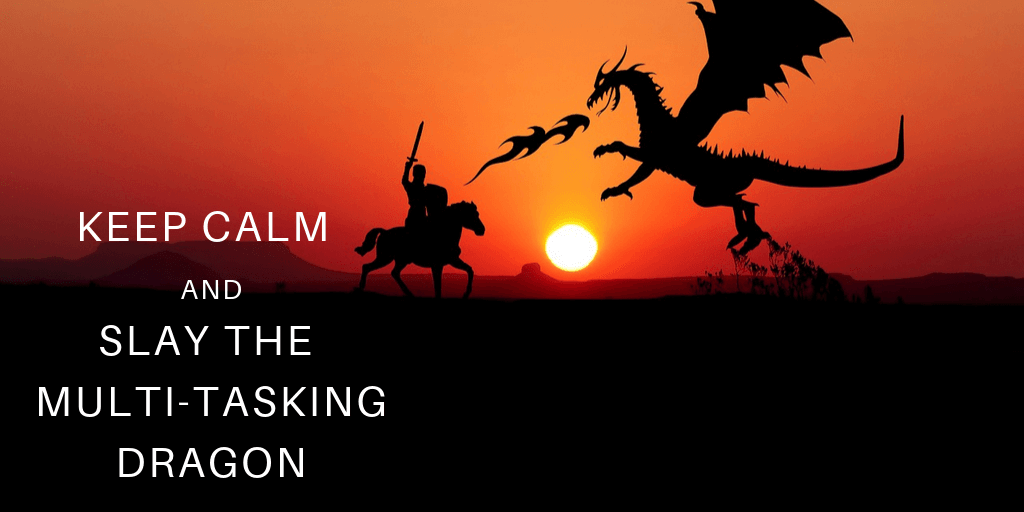
There’s a fine line between positive pressure and heightened anxiety. Positive pressure causes excitement; we’re fueled, energized, eager. Propelled by optimism, we conquer projects big and small, successfully building momentum and accomplishing goals.
In contrast, heightened anxiety may be the result of just a bit too much positive pressure, causing our cup to runneth over. Unlike affirmative energy, which is motivating and productive, we’re infused with nervous energy — which can be draining and disabling. Feeling restless, apprehensive or jittery, we anxiously flit from one thing to another — and accomplish little.
Productivity knocks
Technology can pave the path to productivity, providing a boost to momentum and the resultant feel-good effect. Hours of analysis are saved, for example, when utilizing email marketing functionality for testing subject lines.
Social media monitoring tools like Hootsuite allow users to oversee, manage and schedule content for multiple social channels in a single dashboard, providing a holistic view and improving efficiency.
And password vaults that store, track and safeguard private credentials keep us organized and minimize security risks.
The sense of accomplishment resulting from efficiency tools can serve as a catalyst, offering an invigorating snowball effect.
Brain on overload: Not happy
But the technology equation also has a flip side. Our obsession with technology can lead to frenzied multi-tasking that is not only unproductive, but also unhealthy. With dozens of applications at our fingertips nearly 24/7, we face endless distractions from alerts, auto-play content and information overload.
Even if we’re able to suppress online notifications, the phone still rings, texts interrupt our concentration and unrelated (albeit useful) information provokes us to divert focus from the task at hand. As our attention span gets shorter and shorter, we spiral into a high-anxiety, low productivity pressure cooker state of mind.
Elevated stress levels create the temptation to shift from top priorities that may take more focus — such as strategic thinking or writing — to those that are simpler to accomplish. Tension builds as the day’s to-do list remains intact, the in-box fills and new commitments pile up.
A singular focus can be restorative
Mindfulness gurus advise against frenetic multi-tasking and urge “stepping away from the device” to preserve mental health. Productivity experts recommend keeping email programs closed except at designated set intervals during the day. And sales leaders promote use of daily priority lists to ensure focus on the most important priorities.
Those all sound good, in theory. But in the throes of a hectic workday, we don’t always make the sensible choices.
What if we shifted our goal to optimize multi-tasking,
rather than to maximize it?
Years ago, children who had difficulty learning to read were provided a device that was essentially a large piece of cardboard with a small window in the center. A reading specialist guided the student, moving the shield along as the child read the words visible in the window. Without the distraction of the other words on the page, reading was less stressful and more successful.
Is the pure simplicity of this solution only possible as a memory of olden days? Or can we take inspiration in some way to apply to this very different technology era?
Despite the fact that we can have 25 apps available to us simultaneously, could we learn to remove unrelated distractions and focus on only the most important priority?
Stop and reassess
Healthcare writer John Rossheim recommends setting aside a “sacred hour” dedicated to activities that require your full focus. From a practical perspective, a sacred hour first thing in the morning seems to make the most sense.
Eliminating all distractions is incredibly liberating. Like the cardboard shield used by the reading specialist, your only focus becomes your most important task. And accomplishing your most crucial priority first thing in the morning imparts a combination of positive momentum with a centeredness of calm that can be absolutely cathartic.
If a workday is (ha!) eight hours, and your top goal is completed in only one hour, that leaves seven hours for all whatever else comes your way. And it’s a sure thing that there will be plenty.


